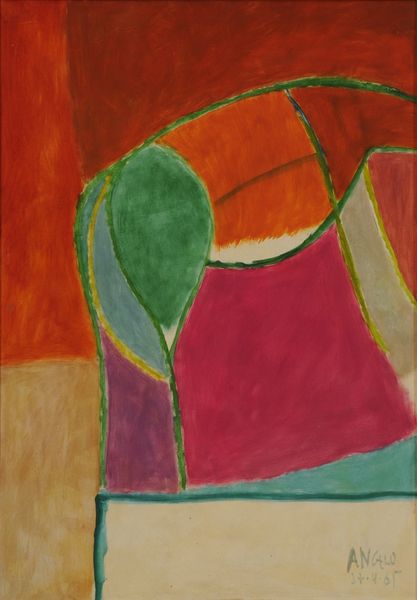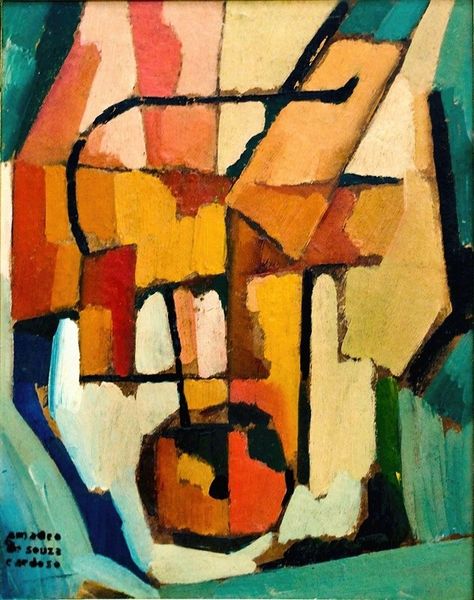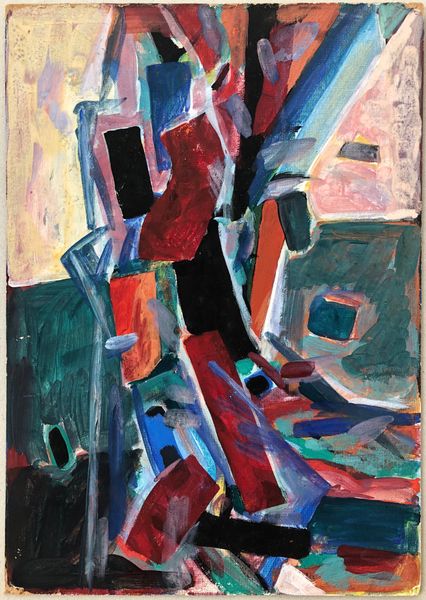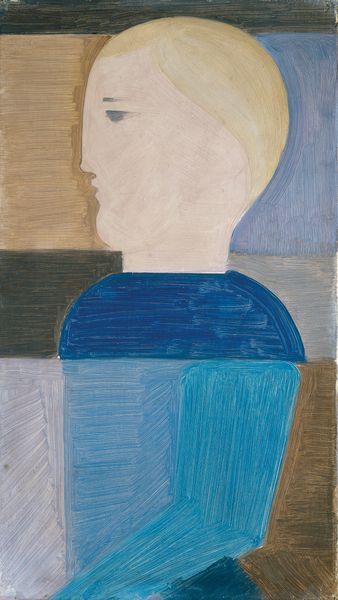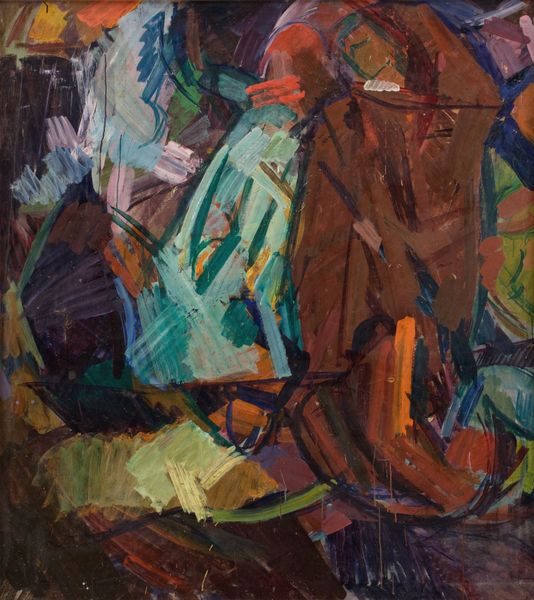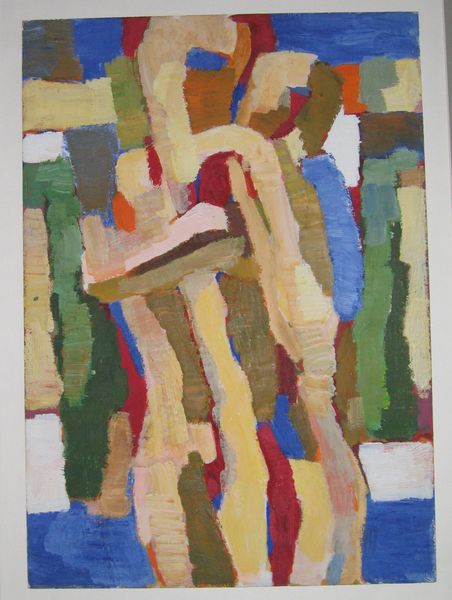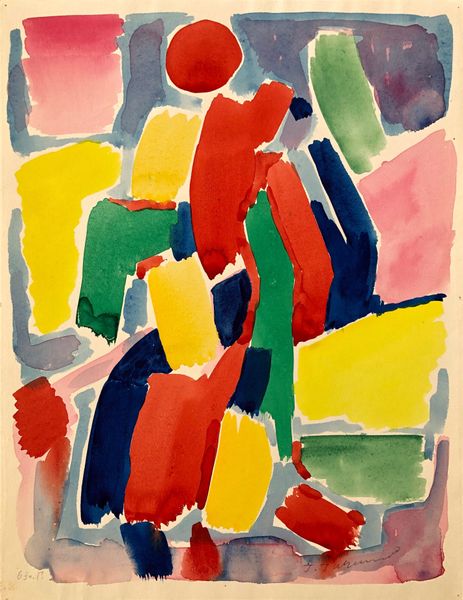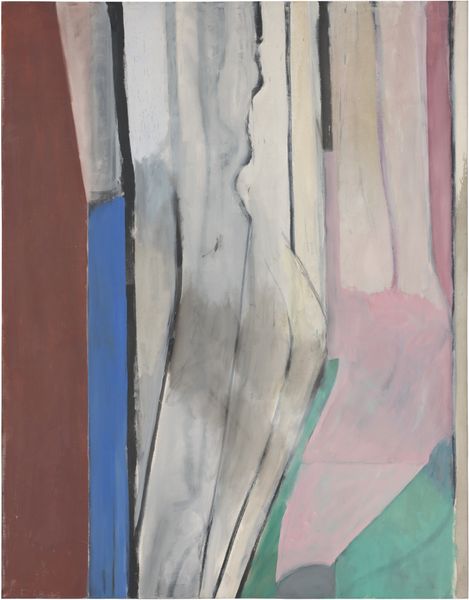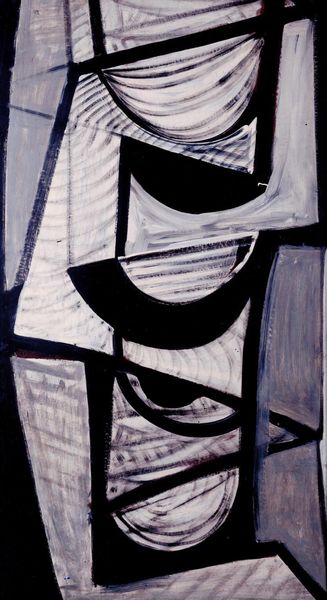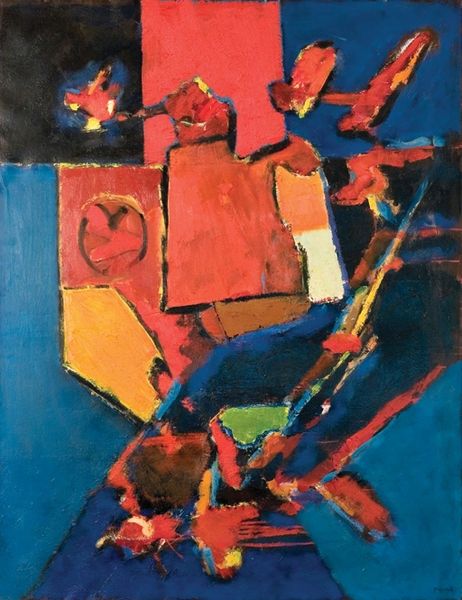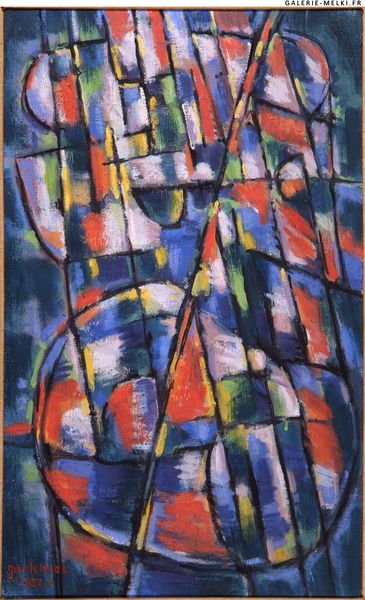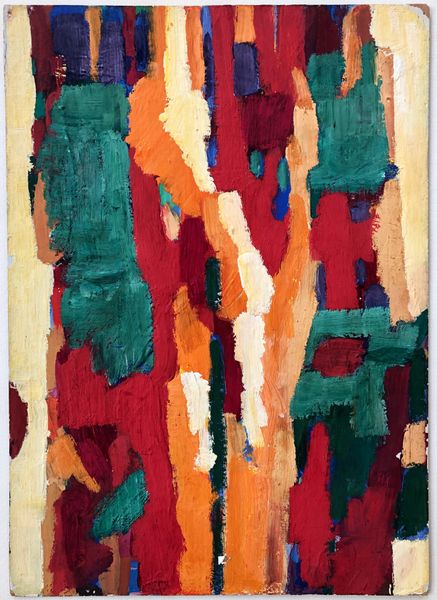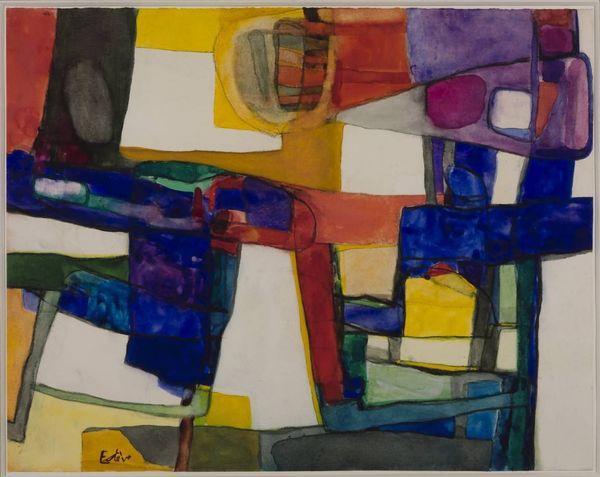
painting, acrylic-paint
#
abstract-expressionism
#
abstract painting
#
painting
#
pop art
#
acrylic-paint
#
form
#
acrylic on canvas
#
geometric
#
geometric-abstraction
#
modernism
Copyright: Hryhorii Havrylenko,Fair Use
Curator: Today we're examining "Abstract Composition," a striking painting created in 1963 by Hryhorii Havrylenko. The piece, an acrylic on canvas, resides in a private collection. Editor: It feels both calming and unsettling at once. The juxtaposition of these solid, almost severe geometric forms against such muted, organic colors creates an intriguing tension. Curator: Absolutely. Let's delve into that tension. Considering the context of 1963, the piece sits interestingly between abstract expressionism and what would soon become pop art. It hints at the growing interest in manufactured forms but is still hand-painted, the artist's labor visible in every brushstroke. You can see how the acrylic paint, then a relatively new medium, allowed for a flatter, more immediate application of color, moving away from the layered glazing of oil paints. Editor: True. Formally, the painting relies heavily on shape and color interaction to establish visual balance. Look at how the weight of the darker blues and greens is counteracted by the expanses of off-white and the smaller, potent dashes of deep red. The geometry borders on fragmentation; you could see each shape as an independent plane with its own inherent value. Curator: And each plane required conscious material choices—pigment selection, the weave of the canvas. We need to think about the role of acrylic polymers versus oils, because it affects the labor. By embracing the possibilities of then-modern materials, Havrylenko wasn't simply representing the world; he was engaged in constructing a new material reality. It raises a question—how was the creation and availability of those materials shaping artistic labor, even defining art? Editor: An important perspective, to be sure. Stepping back from that, there's a semiotic dance going on as well. The interplay of forms invites the eye to read them as symbols. The simplicity almost begs the viewer to project meaning onto the arrangement of triangles, squares, and rectangles. Curator: So, considering these competing views of value, one based on close inspection and the other considering context, can either provide insight into labor and material, even artistic purpose? Editor: For me, analyzing its aesthetic properties offers the viewer direct access to experience and the language used to create meaning—even with abstracted subjects. Curator: And my concern is always the impact materials and cultural expectations had on artists making the pieces. Both viewpoints have some interesting threads in common when considering Havrylenko's creation.
Comments
No comments
Be the first to comment and join the conversation on the ultimate creative platform.
